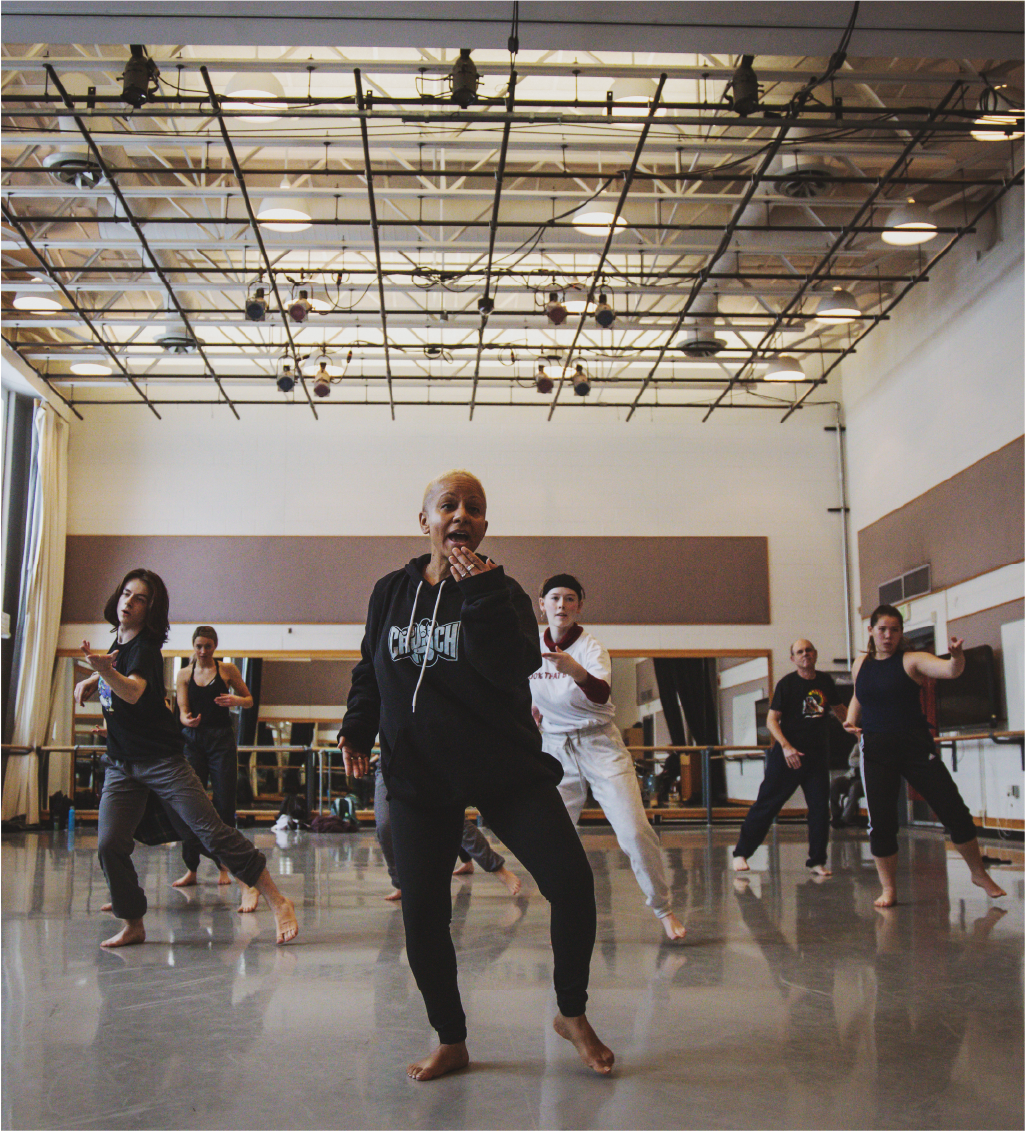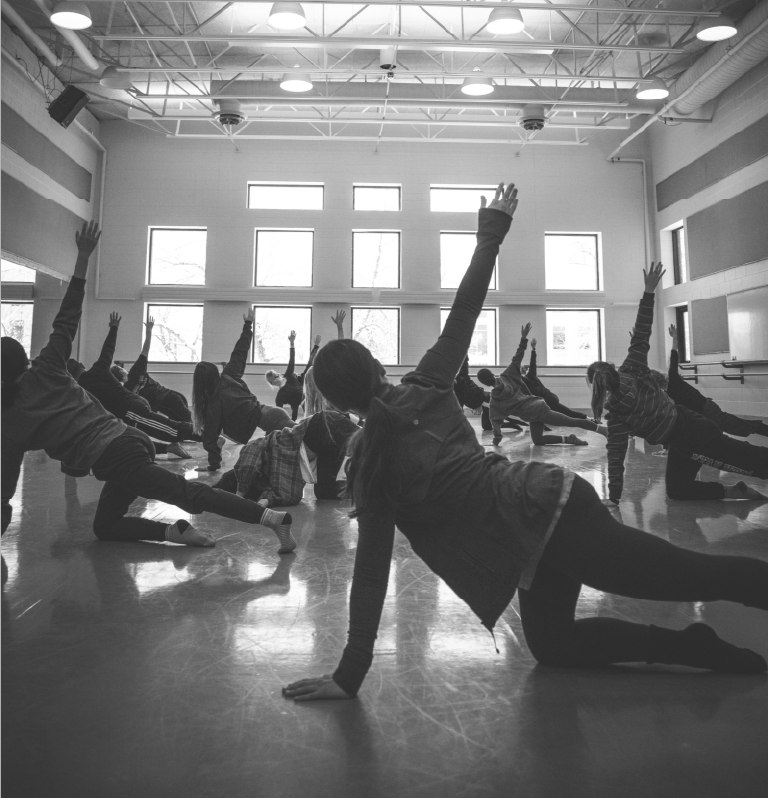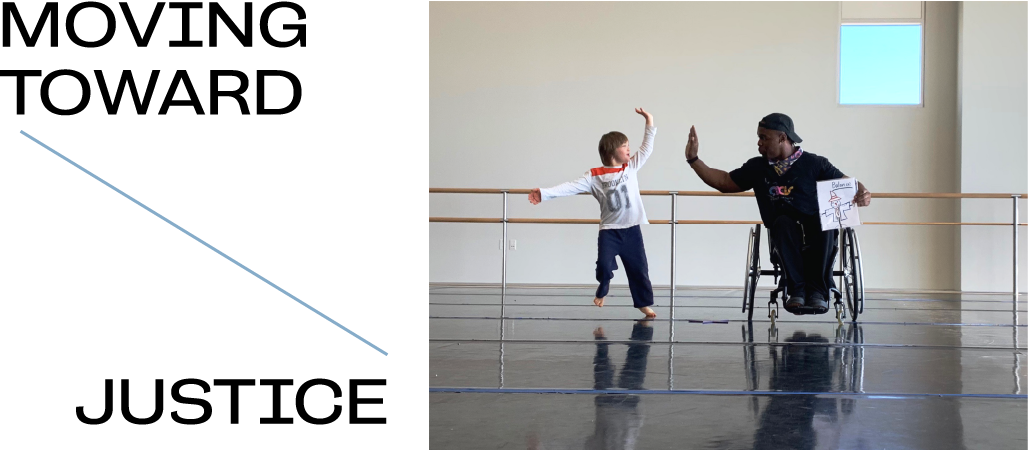When the University of Utah Departments of Ballet and Modern Dance joined in 2016 to become the unified School of Dance, new Director, Luc Vanier, said that creating a culture of wellness became a main focal point.
“When we analyzed our collective ambitions and challenges, it became apparent that our first opportunity was to discover how to be well together,” he said.
While those conversations included pragmatic approaches to working dynamics, shared governance, and communications, they also delved deeply into inclusivity, equity, and representation. Their explorations illuminated how true wellness can only be achieved when systems of oppression and exclusion are acknowledged and addressed.
Shifting cultural norms, however, especially in a large organization or institution, is a lot like turning a large ship. It’s slow, resistance can come from all angles, and once course has seemingly been corrected, it’s probably time to re-evaluate and shift again. It’s not easy, but very necessary in order to chart the best course.
In the 2019-2020 academic year, with all players on board, the School of Dance found its stride in its investment and implementation of change. The approaches are multifaceted, ongoing, and already catalyzing important progress.
And it has come with a little help from some friends.
WRITTEN BY MARINA GOMBERG
DeMarco Sleeper, AXIS Dance Company member high-fives Julian Handman, member, of Tanner Dance’s Dancers with Disabilities Program. (Photo: TWIG Media Lab)
Charles O. Anderson
After visiting the School of Dance as a graduate program reviewer in the summer of 2019, renowned dance educator, choreographer, and artistic director Charles O. Anderson, offered to come back to facilitate conversations about shifting the culture to one of greater justice, equity, and access.
His offer was enthusiastically accepted. As a leading voice in the area of critical race theory in dance both in his choreographic work with his company, dance theatre X, and his teaching at The University of Texas at Austin, Anderson is uniquely positioned to identify places where dance can reflect and diminish oppression.
In fall 2019, during his first of two visits to the U’s School of Dance, he worked with undergraduate and graduate students, faculty, and staff to have brave, personal explorations into the ways discrimination has played roles in their lives.
During that visit, Anderson also set one of his company’s pieces, “(Re)Current Unrest: We Are the People,” on students. With only two weeks in town, he tapped modern dance graduate student, Alex Barbier, as his rehearsal director to take the reins on getting the piece ready for performance after he left. The two stayed in close contact.
“What’s perhaps most powerful about collaborating with Charles is his process, because not only does the work represent important aspects of racial injustice, but his process embodies the ideas of inclusion and representation that he hopes his works manifest in the world,” Barbier said.
The days were often challenging and overwhelming with new choreographic vocabulary, physicality, and sometimes painful introspection, and also deeply positive for the participants.
“Each of us emerged better dancers, but more importantly, we emerged more empathetic humans.”
Anderson returned in spring 2020 for additional collaboration and dialogue.

School of Dance’s performance of Charles Anderson’s “(Re)current Unrest: We the People.” The dancers are Duran Andrade, Erin Butts, Jackson Conn, Amelia D’Avanzo, Emma Furukawa, Elliott Keller, Dakota King, Josie Kolbeck, Joanna Lees, Emma-Ruth Pierre, Kelly Scott, Jillian Snow, Lauren Wattenburg, Ellen Weiler, Vivienne Williams. (Photo: TWIG Media Lab)



Kimani Fowlin teaches a class called “Dancing my Truths” during Dancing Around Race. (Photo: TWIG Media Lab)
AXIS Dance
In an art medium where bodies are the instrument and mode of communication, dance hasn’t historically been all that welcoming to differently-abled humans.
But that’s beginning to change, thanks to people like modern dance Professor Pamela Geber Handman and AXIS Dance Artistic Director, Marc Brew.
Geber Handman has dedicated the latter part of her professional career to making dance more accessible to diverse bodies, and recently collaborated with Utah Presents through a College of Fine Arts Dee Grant to bring AXIS Dance to campus. The company is dedicated to “the commissioning, creation, and performance of contemporary dance that is developed through the collaboration of dancers with and without physical disabilities” and is led by Brew, who reclaimed his identity as a professional dancer after surviving an accident in his early 20s that left him paraplegic.
The two, along with Instructor (Clinical) of Special Education, Kristen Paul, and Associate Professor of Gender Studies and English and Director of the Disability Studies Program, Angela Smith, planned a longer residency for AXIS Dance when they came to perform at Kingsbury Hall for UtahPresents.
In addition to panels, teacher trainings, community engaged work, a presentation for the U’s School of Medicine, and a visit with the children of the U’s Tanner Dance’s Dancers with Disabilities classes, Brew and company members in AXIS got to spend important and intimate time with School of Dance, Department of Special Education, and many other students and faculty.
“The experience of working with Marc was powerfully illuminating and thought-provoking,” said Geber Handman, “He met us where we are, and opened our eyes to new possibilities.”
She described a particularly impactful moment for her when Brew was teaching a technique class in his wheelchair and encouraged students to “locomote through the space.” He had illuminated the value of inclusive language — even in movement prompts —since to have asked the students to walk or run through the space would have excluded movers like him.
“He showed us — amongst his resilience, storytelling, and choreographic brilliance — the power of inclusive language to invite individual interpretation of movement and welcome all bodies, no matter how they move,” she said. “And I can’t wait to see what possibilities arise as we widen the definition of what being a dancer means.”

Dancing Around Race
After attending the 2018 conference of the National Dance Education Organization, where she presented her paper, “Connecting Dance Histories, Theories, and Criticism,” School of Dance Assistant Professor Kate Mattingly decided to bring the conversation of inequities in higher education back to the U.
When she received the Dee Grant written with U collaborators, Erika George and Maile Arvin, Mattingly teamed up with colleagues Kimani Fowlin, Rebecca Chaleff, Tria Blu Wakpa, and Gerald Casel to host a four-day immersion called “Dancing Around Race: Whiteness in Higher Education” that was designed to “address and challenge systemic exclusions in curricular design, teaching practices, and course contents.”
The event, held in January 2020, welcomed around 60 dance professionals from across the country and included public panels, technique classes, discussions, moving and writing practices, and presentations. The series of events was fueled by the aspiration of decentering whiteness both in its planning and execution, and drew inspiration from Casel’s Dancing Around Race events in the Bay Area.
The foundational idea was inspired. The timing was kismet. And its impacts were profound. Participants shared words like “reflective, invested, and honest” to describe their experience of the immersion.
School of Dance Assistant Professor, Natalie Desch said the greatest impact for her was “The awareness that was sparked for many people, and our responsibility of doing more…There’s nothing but more that can be done.”
And doing more is exactly what Mattingly plans to do. With the wind in their sails, she and her colleagues have submitted a proposal to the Dance Studies Association annual conference which will take place in Vancouver in October 2020 to continue the conversation.
So, while the School of Dance will forever be working towards a better future, we celebrate the progress being made in the present. ■

Participants at Dancing Around Race take Gerald Casel’s class called “Somatic-based movement practice. (Photo: TWIG Media Lab)













